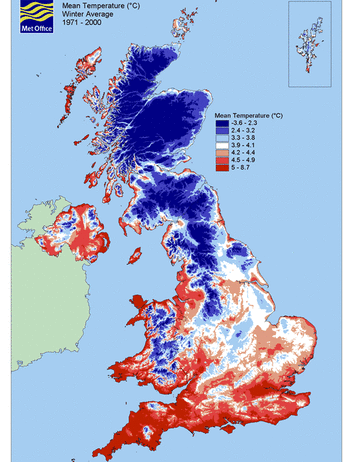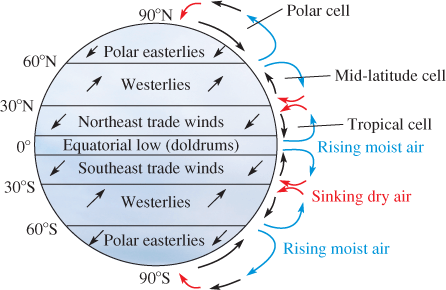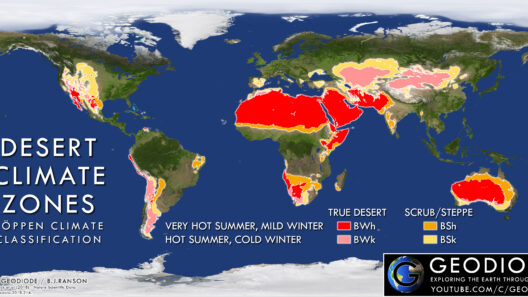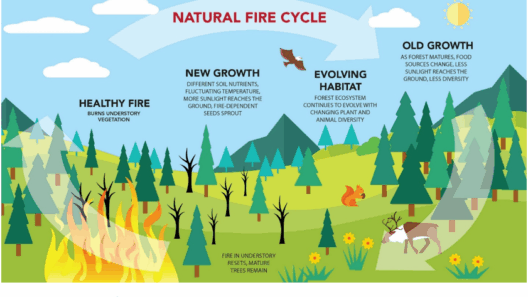When pondering the climate of the United Kingdom, one might whimsically ask: “Why does it always rain when I forget my umbrella?” This playful question is indicative of the UK’s notorious weather unpredictability. The British Isles, renowned for their varied climatic conditions, comprise England, Scotland, Wales, and Northern Ireland. While many might perceive a singular, dreary image of British weather, the reality is that the climate here is a tapestry of influences, characterized by temperate maritime conditions that exhibit significant regional differences.
The UK’s climate is predominantly categorized as maritime temperate. This characterization stems from several factors, including the geographical positioning of the Isles, the surrounding Atlantic Ocean’s moderating influence, and prevailing wind patterns. The North Atlantic Drift, an extension of the Gulf Stream, plays a critical role in shaping environmental conditions, providing relatively mild winters and cool summers compared to other regions at similar latitudes.
In coastal regions, winter temperatures seldom plunge below freezing, with an average ranging between 1°C and 7°C (34°F to 45°F). On the other hand, summers tend to be moderate, rarely exceeding 30°C (86°F). However, inland areas experience greater temperature fluctuations, leading to colder winters and warmer summers. For example, cities such as Birmingham and Manchester can contend with winter temperatures that drop nearer to -3°C (27°F), juxtaposed with summer highs that occasionally surpass 35°C (95°F).
Throughout the British Isles, precipitation levels exhibit considerable variation. The western coastal regions, particularly Scotland and Wales, receive some of the highest rainfall in Europe, averaging 3,000mm (118 inches) annually in places like the Welsh mountains. Conversely, eastern England, particularly the region surrounding East Anglia, is comparatively arid, with average annual rainfall of around 600mm (24 inches). This precipitation disparity demonstrates how geography plays a vital role in weather patterns, revealing a rich patchwork of microclimates within the Isles.
The UK is also frequently subjected to atmospheric disturbances, most notably the prevailing westerlies, which bring wet and windy weather, particularly during the autumn and winter months. However, the weather phenomena aren’t solely limited to rain. The Isles experience a range of meteorological events, from sudden snowfalls in winter to summer thunderstorms. Recent years have seen an uptick in extreme weather patterns, raising questions about the correlation between these events and the overarching theme of climate change.
Climate change has begun to reshape the traditional weather patterns in the UK. Rising global temperatures are resulting in alterations to the climate system, influencing not only temperatures but also the frequency and intensity of precipitation. A striking phenomenon is the increased occurrence of prolonged dry spells interspersed with intense rainfall. This trend can exacerbate flooding risks, particularly in urban areas with inadequate drainage systems.
The impacts of climate change extend beyond just weather extremes. Biodiversity within the UK is under threat, as many species struggle to adapt to the changing environment. Birds that once found ample food sources in temperate climates may find their feeding grounds shifting as temperatures rise, leading to mismatches in breeding cycles and food availability. Consequently, certain species may face extinction, which could have cascading effects throughout the ecosystem.
In addressing the challenges posed by climate change, it becomes paramount for the UK to adopt adaptive strategies. These strategies include improving flood defenses, promoting sustainable urban development, and investing in renewable energy sources—focusing on wind, solar, and hydropower. The UK is already a global leader in offshore wind energy, capitalizing on its breezy coastal regions to generate clean electricity.
Moreover, public awareness and engagement are critical in combating climate change. Initiatives encouraging individuals to adopt greener lifestyles, whether through reducing energy consumption, utilizing public transport, or minimizing waste, can collectively contribute to a more sustainable environmental footprint. The question arises: Are we, as denizens of the British Isles, prepared to embrace these changes to safeguard our climate and environment for future generations?
The future of the UK’s climate remains contingent upon both natural and human-induced factors. Efforts to mitigate climate change must be concerted and robust. Local communities must engage actively in conserving their environments and adjusting practices that contribute to greenhouse gas emissions. Policymakers also have a pivotal role—implementing regulations that encourage sustainability, facilitating innovations in environmental technologies, and ensuring that climate action is at the forefront of political agendas.
In conclusion, the climate of the British Isles is a complex and dynamic system, deeply influenced by both intrinsic geographical characteristics and extrinsic anthropogenic activities. The whimsical question about rain serves as a reminder of the broader climatic narrative that encompasses the UK. As weather trends continue to evolve, the imperative to act becomes ever more critical. The solutions to these challenges lie not only within the scientific community but also within the everyday choices made by individuals and communities across the Isles.








